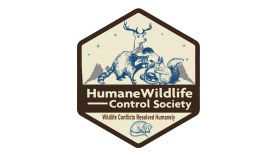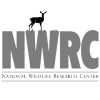Humane Wildlife Control in Nassau County, NY
The Humane Wildlife Control Society recommends non-invasive solutions to resolve human-wildlife conflicts. This includes:
Determining if the issue needs to be addressed at all
Opting for preventative measures first
Opting for wildlife exclusion as opposed to trapping
If trapping is the only way to solve the problem do so humanely
The Humane Wildlife Control Society screens candidates prior to recommendation. Our process requires any company we recommend to meet the following criteria:
Is properly licensed in New York for wildlife control
Carries appropriate business licenses and insurance
Complies with all New York laws and regulations for wildlife control
Adheres to the humane principles listed above.
In Nassau County, New York we recommend Humane Wildlife Removal Nassau County for professional wildlife control services. This is a private company that charges for their services.
Contact Information:
Long Island Wildlife Pest Control
516-350-5780
If you have any wildlife issues that can be handled by the state government agency for free, the New York Wildlife Commission can help.
State Contact Information: (518) 402-8883
The State Department of Agriculture may also be able to address your wildlife problem for no charge.
USDA Contact Information: (518) 457-2771
Ethical Wildlife Management for Businesses in Nassau County, NY Raccoons: Often found in dumpsters and attics Legal Framework NY Environmental Conservation Law (ECL) regulates wildlife management Prevention Strategies Install wildlife-proof garbage containers Operational Changes Conduct regular property inspections for wildlife entry points Humane Removal Options Wildlife causing property damage Professional Wildlife Services Licensed Wildlife Rehabilitators in Nassau County: Volunteers for Wildlife (516-674-0982) NYS Licensed Nuisance Wildlife Control Operators (NWCOs) Find licensed operators: dec.ny.gov/animals/nwco.html DIY Humane Deterrents Sound deterrents: Ultrasonic devices, wind chimes Special Considerations by Species Protected under NY law Canada Geese Protected under Migratory Bird Treaty Act White-tailed Deer Fencing minimum 8 feet high Compliance and Documentation Migratory Bird Depredation Permit for bird management Record Keeping Document all wildlife encounters Community Relations Post signage explaining wildlife management efforts Working with Neighbors Coordinate wildlife management strategies Resources Nassau County Department of Health (516-227-9697) State Resources NYSDEC Region 1 Office (631-444-0310) Additional Help Cornell Cooperative Extension Nassau County (516-832-2591) Emergency Situations Injured wildlife: Contact Volunteers for Wildlife (516-674-0982)
Introduction
This guide provides Nassau County businesses with ethical approaches to wildlife management that comply with local regulations while protecting both wildlife and business interests.
Common Wildlife Concerns in Nassau County
Opossums: Frequent gardens and outdoor structures
Deer: Impact landscaping and create traffic hazards
Geese: Congregate on lawns and leave droppings
Bats: Roost in building crevices and attics
Squirrels: Damage wiring and insulation
Seagulls: Create noise and waste issues near coastal businesses
Nassau County Ordinance Chapter 238 addresses wildlife protection
Migratory Bird Treaty Act protects most bird species
Endangered Species Act protects threatened wildlife
Property Modifications
Use exclusion barriers on building entry points
Apply wildlife deterrent landscaping (native plantings less attractive to deer)
Install motion-activated sprinklers or lights
Remove standing water sources
Store food waste securely
Clean outdoor eating areas promptly
Maintain landscaping (trim tree branches away from structures)
Train staff on wildlife encounter protocols
When to Take Action
Public health concerns (disease transmission risk)
Safety hazards to employees or customers
Recurring issues despite prevention measures
Wildlife Center of Long Island (631-979-6244)
Scent deterrents: Predator urine, essential oils
Visual deterrents: Reflective tape, fake predators
Taste deterrents: Hot pepper spray for plants
Bats
Removal only during non-maternity seasons (August-May)
Install one-way excluders before sealing entry points
Consider installing bat houses as alternative habitat
Egg addling requires federal permit
Border collies and other harassment techniques most effective
Habitat modification (tall grasses near water) discourages nesting
Repellents need frequent reapplication
Strategic native plantings deter browsing
Professional culling requires permits
Required Permits
NYSDEC Nuisance Wildlife Control License for removal
Special Purpose Permit for egg/nest removal
Maintain records of management strategies implemented
Track effectiveness of different approaches
Keep copies of any permits obtained
Customer Communication
Include information about not feeding wildlife
Educate customers on wildlife benefits and management goals
Share successful deterrent methods
Create neighborhood-wide prevention plans
Nassau County Resources
Nassau County SPCA (516-843-7722)
Long Island Audubon Society (516-747-0011)
Environmental Conservation Officers (631-444-0250)
Humane Society of New York (212-752-4842)
Wildlife threatening public safety: Call Nassau County Police (516-573-7000)
Suspected rabid animal: Nassau County Health Department (516-227-9697)







